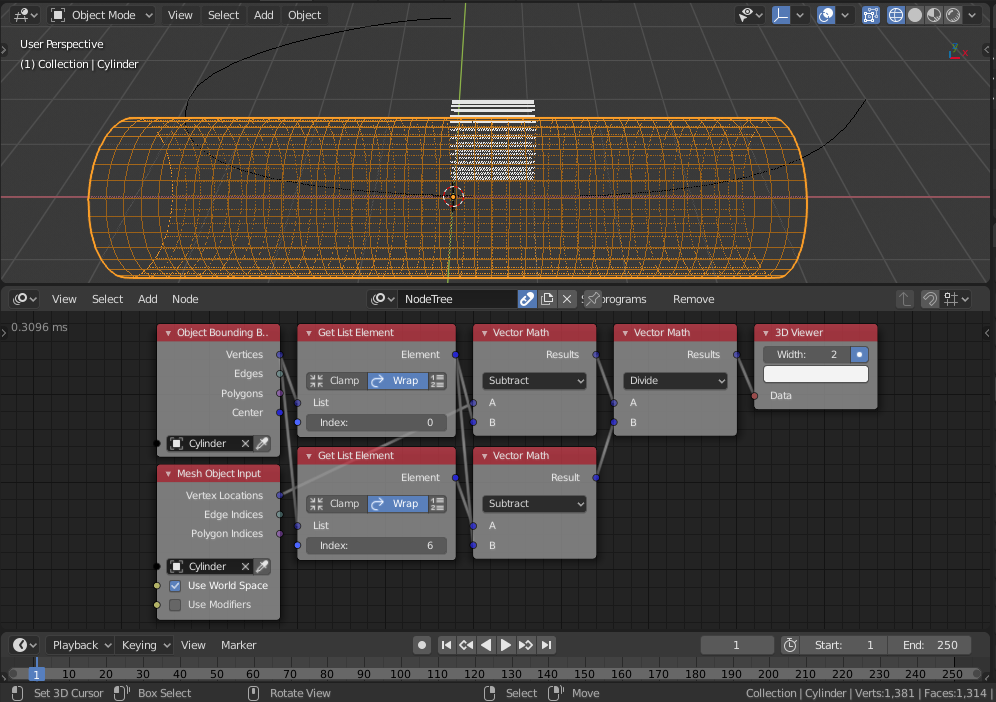Is it possible to deform an object along a spline in AN just as it can be done with the curve modifier?
I'm trying to do so with the spline falloff node affecting the vertices of my mesh but I'm getting results I can not understand.
So an example would be, given a cylinder transform its vertices in a way which follows an spline object.
EDIT
@Omar Ahmad solution works perfect if our starting point is a clean object. After solving the original question I'm editing my original question for further knowledge.
If we want to combine a series of deformations and add it to our already answered curve deformation, how would it be done? In the following graph you can see my original state:

This part of the graph deforms in X each element till it reaches a post, is important to state that those elements have already been deformed in Y before reaching this part of the graph.
So given all this deformations how can I add the deformation of the spline to get my elements to deform like this? (note we have access to yellow spline)






